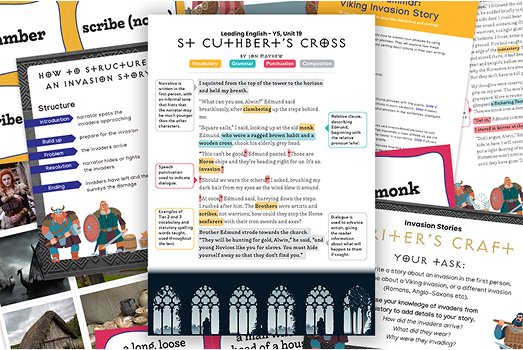Too often, pupil planning is an afterthought – a five-minute bullet list, a half-finished story map or a copied model that we never revisit. When we rush children through the planning process – or skip it altogether – their writing falters.
But when we do it well, planning transforms writing. The new Writing Framework is clear: planning is foundational. It gives pupils structure for their creativity, reduces cognitive load and supports independence.
So why do so many schools struggle with it?
From working with schools across the country, I’ve seen the following common barriers:
- Time pressure – With packed timetables, planning can feel expendable. But cutting it often leads to more rewriting, more reteaching and more frustration.
- Cognitive overload – Without a plan, pupils must juggle content, structure, grammar and handwriting all at once.
- Misunderstood creativity – Some fear that planning stifles pupil voice. But it actually does the opposite – freeing pupils to focus on craft.
- Unclear purpose – If planning doesn’t connect to audience or outcome, pupils won’t see the point.
- Pupil resistance – This is often the result of tokenistic or rigid planning in the past. When pupils are taught to use a plan, they come to value it.
- Low expectations – With clear modelling and practice, every pupil can learn to plan effectively. It just takes structure, consistency and time.
Leadership makes the difference
Embedding a culture of purposeful planning isn’t about quick fixes. It takes strategic intent and day-to-day follow-through. So, what helps?
Build shared understanding
Clarify what planning is, why it matters and how it links to writing outcomes. Anchor this in curriculum documentation, CPD and moderation.
Show what it looks like
Use team meetings to model planning strategies. Share examples of co-construction and pupil planning in action. Prioritise drop-ins where planning is being taught and used.
Make it part of monitoring
When looking at books or during pupil voice, ask:
- How are pupils supported to plan?
- Are plans revisited and built on?
- Do they reflect purpose and genre?
Protect time for it
Map planning into your sequences. Make it clear that it’s not dead time – it’s teaching time. Done well, it improves outcomes and reduces workload.
Resource it properly
Give teachers and pupils the tools they need – prompts, sentence stems, vocabulary banks, scaffolded formats. With time, pupils can move from scaffolded to self-directed planning.
Planning isn’t just a nice-to-have. It’s foundational. It helps pupils take control of their writing – and gain confidence and independence along the way.
At Leading English, we embed purposeful planning into every sequence. Our units are structured, research-informed and designed to raise outcomes without increasing workload.





